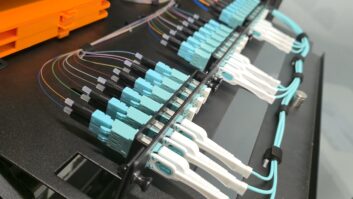As the implementation of home networks increases, custom installers are forced to contend with an added number of unfavorable circumstances, especially when conducting retrofit projects in existing homes. While wireless systems offer solutions to a host of problems, many believe that striking the balance between what systems should remain wired, and which can be handled wirelessly, is the key to completing a project of quality.
“We are using the existing backbone in the home to create that wired backbone, and then we are creating a flexible access network–whether it be wired or wireless–to get on that backbone,” explained Jim Gayton, director of marketing at SercoNet (www.serconet.net) a technology developer located in Southborough, Massachusetts. Adopting a “no new wires” philosophy, SercoNet’s technology, which is implemented through the developer’s “smart outlets,” uses existing telephone wires as the infrastructure for broadband networks. SercoNet’s smart outlets work in conjunction with a number of standard interfaces, including 10BaseT, 100Base TX, USB, IEEE-1394, 802.11b and Bluetooth. A Local Area Network (LAN) is created with these outlets, enabling voice, data and multimedia streaming.
“We are pushing wireless out to the point in the home where the user can most benefit from it,” Gayton continued. “One of the big drawbacks of 802.11b is its distance from its bay station. If you could move that bay station to a point in the home where it is most convenient, that would obviously help the performance of wireless. We believe that wireless should be a great access technology, but it’s not robust enough to be a backbone technology–not with the current standards today.”
Still, wireless fidelity (a.k.a. Wi-Fi) is catching on fast. According to market research firm Ipsos-Reid, while only three percent of the general population in the U.S. currently houses a Wi-Fi home network, a 50 percent increase in Wi-Fi adoption is expected over the next six months. However, some consumers are unsure as to whether they are located within close enough proximity to an access point. Security is another concern.
Parks Associates, a market research firm in Dallas, estimates that by the end of this year, more than 9.5 million households will boast a home network; 2 million of these homes will feature wireless networking technology. More than seven million households will be equipped with a home network with wireless technology by 2006.
“The concept of untethered broadband access has made wireless networking as popular as it is now,” noted Parks Associates vice president of research, Kurt Scherf. “For now, the popularity of wireless networks lies in its ability to fairly easily connect one or more PCs to a broadband Internet connection.”
Gordon van Zuiden, president, cyberManor (www.cybermanor.com) a home networking and broadband systems integration firm based in Los Gatos, California, also pointed to shared broadband Internet accessibility.
“Many times, a wireless network is done for the purpose of allowing a broadband connection to be more easily and flexibly shared through various points of entry,” van Zuiden confirmed. “It’s primarily used in retrofit situations, but we also use it in new construction.”
One of the driving forces behind wireless is the Wi-Fi Alliance (www.wi-fi.org). Established in 1999, the mandate of this organization (formerly WECA) is to certify 802.11b products and promote them globally. As of press time, 677 products from 113 companies have received certification.
“Both the rate and the scope of certification continues to increase,” Dennis Eaton, chairman of the Alliance, stated in an announcement. “Currently, the Alliance is certifying almost 40 new IEEE 802.11a and 802.11b products per month in four laboratories around the world. In the near future, the Alliance will also be certifying Wi-Fi Protected Access and 802.11g products. We expect these additional capabilities to add to the number of certified products.”
Currently in development are 802.11g, which will increase the speed of wireless connection. Although 802.11g is slated for ratification in June 2003, a number of manufacturers are already releasing products that support this standard.
“While the IEEE is pleased to see early development of product based on our work, it is quite speculative to release products at this time,” stated Stuart Kerry, chair of the IEEE 802.11 Working Group, last February. “The only sure way to guarantee compliance and avoid potential interoperability problems is to wait for final ratification of 802.11g, which is highly likely in June 2003.”
While there are other competing standards, many industry experts agree that 802.11 is the strongest so far.
“Thanks in large part to the Wi-Fi Alliance, wireless networks have become one of the few bright spots in the technology industry,” Scherf noted. “We’ll look for 802.11g to have success, thanks to its ability to be backward-compatible to 802.11b products, since they both operate in the 2.4GHz space.”
But for Darin Hicks, director of operations at Aspen Automated Lifestyles (www.aspenautomated.com) a custom installation company based in Bountiful, Utah, technical challenges are only one portion of the concerns surrounding wireless. “Our issues with wireless are mainly from a business perspective,” he said. “We must implement products that provide value to our clients, and make sense to us so we can make money. There is very little margin in some of these products.”
Hicks did acknowledge, however, that offering wireless is becoming increasingly unavoidable. Brenton Mastronardi, president of custom installation firm Architronix Inc. (www.architronix.com) in Carrolton, Texas, also has experienced an increased wireless business.
“The demand for wireless has been huge–we have definitely felt it,” he said, emphasizing that “the real benefit is that wireless allows you the ability to not use any new wires.”
Most integrators are quick to point out the technology’s specific role in home networking. “Wireless now is great for what it is,” said Dan Allen, director of marketing and business development at Bolt Home Systems (www.bolthomesystems.com) based in Phoenix, Arizona. “The most significant part of it is computer networking throughout the house and being able to carry that laptop of Web pad anywhere you want.”
While there is a distinct, do-it-yourself (DIY) element to the implementation of wireless systems, Gayton believes the need for hands-on, professional expertise is increasing. “Unless it is absolutely plug-and-play, where you can plug it in and it works, there are going to be difficulties in having it accepted in the broader marketplace,” he said, noting that presently, wireless systems are still in the early adoption phase. “We believe that, from a home networking perspective, the trend is moving toward professional installation. The market is quickly going to a service model.”
And its popularity shows no signs of decreasing. Observed van Zuiden: “More and more commonly, I think almost every installation the we do has a wireless aspect to it.”
Carolyn Heinze ([email protected]) works from her office in Vancouver, Canada.







